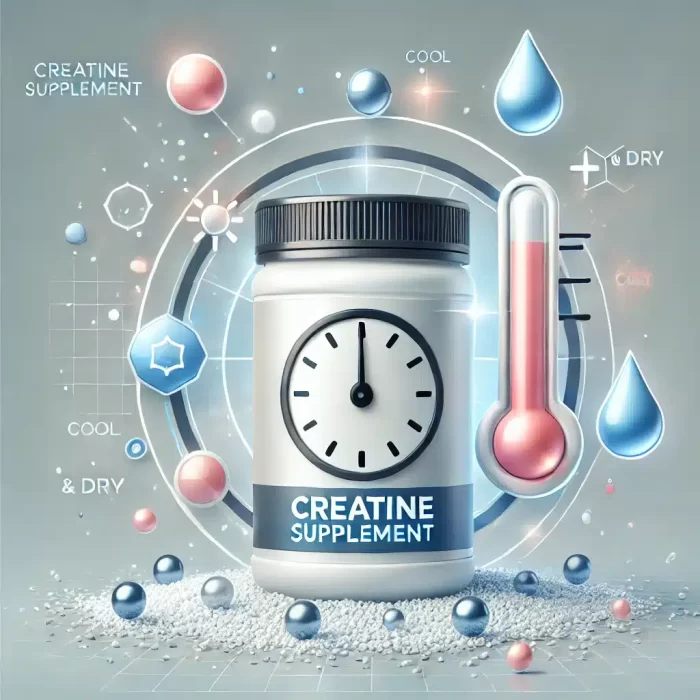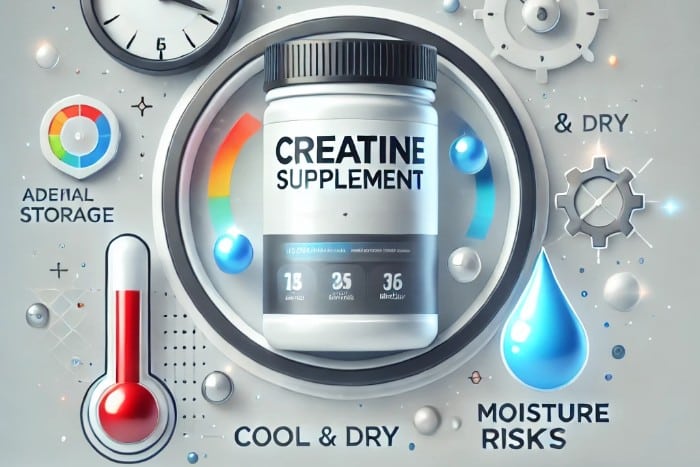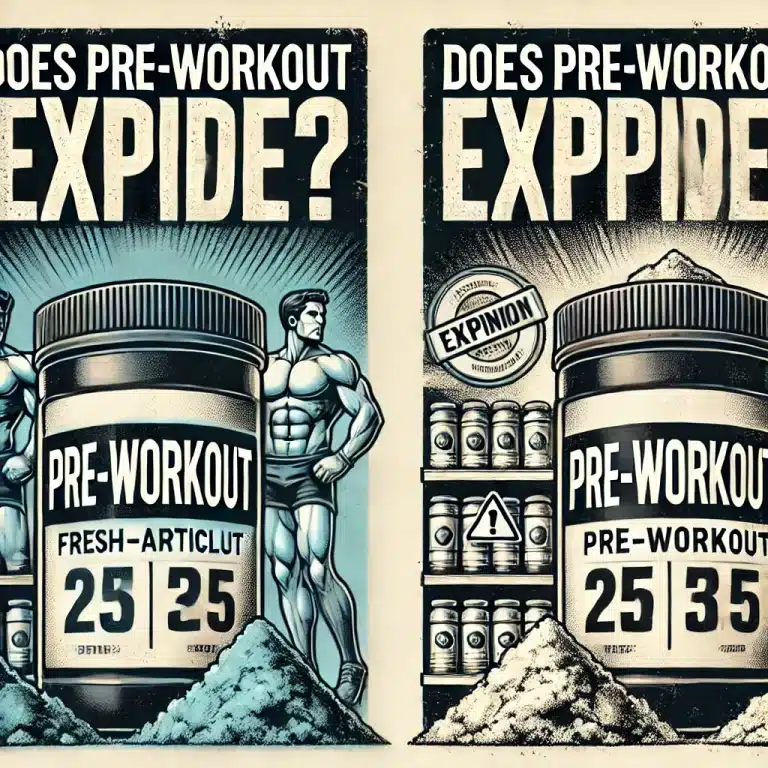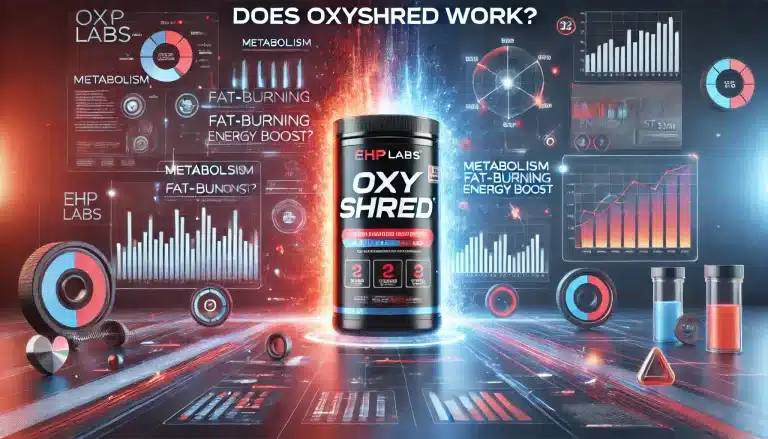Does Creatine Expire? A Comprehensive Guide for Athletes and Fitness Enthusiasts
Creatine is one of the most studied and proven performance- and strength-enhancing supplements on the market. Whether you are an athlete, bodybuilder, or fitness enthusiast, you probably have a tub of some creatine powder hanging out in your pantry. But what should you do if you’re about to open an old container, only to discover that it is dated past its expiration date? Is creatine expired, and can it be safe to use?
As with all supplements, creatine has an expiration date printed on its packaging, but that doesn’t automatically mean it expires on that date. Creatine is a very stable compound, which means it can remain good for years if well stored, unlike perishable foods. However, moisture, temperature changes, and ingredient composition can all change how long it lasts.
In this article, we’ll go over everything you need to know about creatine’s shelf life, signs that it’s gone bad, and whether expired creatine is still effective. We’ll also provide proper storage advice so that you get the most out of your supplement and avoid wasting money. So, let’s get right into it and bust some myths regarding expired creatine!
Understanding Creatine’s Shelf Life
The shelf life of creatine will vary based on several factors, including its: chemical structure, storage conditions, and form (powder, liquid, or gummies). The most common and researched type of creatine supplement is creatine monohydrate, which is very stable as long as you store it correctly. This also, adds to its long-term tracking capability as it is relatively simple and does not have complex add-ons to distract you from other goals and objectives of the exercises you intend to perform.
Studies have shown that creatine monohydrate powder is stable and effective for up to four years, even when stored under less-than-ideal conditions like exposure to relatively high temperatures (100°F (40°C) to 140°F (60°C)).
Such remarkable stability comes from the compound’s resistance to chemical breakdown when stored appropriately. Creatine monohydrate also maintains its potency for years after the expiration date listed on the container, as long it’s stored in a dry, cool, airtight environment. That makes this one of the easiest and most lasting supplements on the market.
Other forms of creatine like liquid creatine and pre-mixed solutions are much more vulnerable to environmental factors. This makes those formulations susceptible to breaking, especially due to humidity or rapid temperature changes. Liquid creatine, for example, starts converting into creatinine, a waste product that has no performance-enhancing properties of creatine far sooner than powdered creatine. For this reason, liquid creatine is usually significantly less shelf-stable and needs to be handled and stored more carefully.
To maximize your creatine experience, it’s important to understand the ins and outs of creatine stability. When selecting a specific creatine and following recommended storage practices, users can keep their creatine effective for long-term periods. Not only does this assist in prolonging the effectiveness of the product; but it also offers far better value for dollars (or pounds), especially for those who buy creatine in bulk quantities. How Do the Proper Storage Methods Benefit You? Regardless if you are a pro or newbie in the field of sports, storing your creatine properly will make all the difference in your results.
Does Expired Creatine Lose Its Effectiveness?
Creatine does not “expire” in the way that, say, a carton of milk suddenly becomes dangerous to drink, or food that isn’t safe to eat. Rather, it undergoes an ongoing gradual breakdown process & eventually turns into a substance known as creatinine. Creatinine, a natural byproduct of creatine metabolism in the body, is harmless in consumption but does not provide similar muscle-strengthening or sports performance benefits to creatine.
The speed at which this degradation occurs is affected by temperature, humidity, and the quality of the creatine storage. Creatine monohydrate kept in a cool, dry, and airtight environment may remain stable and effective years after its expiration date. Research and scientific studies support that creatine can last a long time in storage without losing potency, with only a small amount converting into creatinine. That’s good news — this means “expired” creatine is likely still effective, but the strength of its benefits may be slightly reduced.
It’s important to realize the expiration date on a creatine container is typically a guideline for peak quality, not a cutoff for usability. Manufacturers use the dates to show the time of potency guarantee for the product. After this, while some deg degeneration may occur, it’s also slow, not enough to make the product unusable, provided it had been stored correctly.
That being said, the potency of expired creatine may also vary based on the creatine form. Liquid creatine or pre-mixed solutions are much less stable than powdered creatine, so they break down faster — making their expiration dates more important. However, if taking a liquid creatine supplement, the expiration date should be strictly adhered to, to ensure that you’re receiving the intended benefits.
If you are on the fence about using expired creatine, then it is important to assess how it appears. Creatine that has clumped together, turned brown, smells off, or has visible signs of contamination is also worth throwing out.” “But if the supplement appears and smells normal and has been stored correctly, it likely is considered safe and effective to use, even if past its labeled expiration date.”
Knowing how much creatine breaks down, as well as how to store it correctly, you can make the most of the supplement even after its expiration date has passed. This way, you reap the most benefit from your investment and achieve your fitness goals without compromise.
How to Identify Spoiled or Ineffective Creatine
Although creatine itself is quite stable, there are definitely signs of degradation or contamination to watch out for to ensure uncompromised performance and safety. You can dose on all that and well actually, here are some signs of spoiled or not effective creatine:
- Off-Putting Odor: Fresh creatine should usually be odorless. If your creatine starts to smell sour, musty, or otherwise strange, it’s a good sign it has spoiled or been contaminated, usually from moisture exposure or bacteria growing.
- Purity: Raw creatine monohydrate is an avowedly white powder. A change in color — yellowing or browning — might indicate degradation, contamination, or exposure to moisture and light, all of which can diminish its potency and safety.
- Clumping: Some mild clumping is normal for more humid climates, and can generally be broken up without much concern — but large, hardened clumps may be a sign of major moisture infiltration. This not only influences the quality but also enhances the risk of microbial growth.
- Strange Flavor: To creatine is relatively tasteless, or has a very vague, neutral flavor. Bitter, metallic, or off-tastes indicate product degradation, and such products should not be consumed.
- Altered Texture: Moisture contamination may render the creatine extremely sticky, cakey in consistency, or too hard for use.
Old Creatine Won’t mix:
Creatine that sits on your shelf for a long time will not dissolve in liquid as well as fresh creatine. Creatine powder can, over time, absorb moisture from the air even if the containers seem sealed and result in clumping or hardening.
These differences in texture can prevent it from completely dissolving in water or other liquids, and often leaves gritty particles or sediment at the bottom of your shaker. Although creatine that’s not expired and smells normal is usually still safe to eat, the decreased solubility may affect how well your body absorbs it and potentially reduce its effectiveness in supporting your fitness goals. Store it properly in a cool and dry environment, far from heat, humidity and direct sunlight, and always re-seal the container tightly after each use, and that way you will preserve the freshness.
If you’re regularly experiencing mixing problems with your creatine, or the texture has you left with a sticky or clumpy substance, it may indicate that the product has degraded, and a new supply is worth the investment to ensure you’re getting the maximum prospective benefits creatine has to offer.
If you spot any of these signs, it’s recommended to play it safe and replace your creatine.
Proper Storage Practices for Creatine

Follow these storage tips to make sure your creatine stays fresh and effective as long as possible:
- Keep It Dry: Moisture is the bane of creatine. Use a dry scoop only, and ensure that the container is secure after use. That’s because exposure to water or humidity causes clumping and promotes degradation, drastically reducing the shelf life of the creatine you purchased.
- Store in a cool, dark place: Heat and sunlight can hasten degradation by increasing the rate of conversion to creatinine. You may also store your creatine in a pantry or cupboard that isn’t exposed to direct sunlight or heat sources such as an oven or heater. This process serves to keep the creatine’s chemical structure stable.
- What to Do: Avoid Temperature Fluctuations: Consistent storage conditions are key to topical treatments maintaining their stability. Frequent temperature changes, like moving the container from a hot car to a cool room, can lead to condensation within the packaging, delivering moisture and ruining the creatine quality.
- Transfer To An AirtightSealed Container: The original packaging is also not airtight, so you might want to transfer the creatine into an airtight container. Just as with moisture, exposure to air is one of the biggest offenders when it comes to causally affecting creatine degradation. Use containers that are made of sturdy, food-safe materials with tight seals to give your food the best protection possible.
- Store It Away from Not-so-Good Smells: In some cases, creatine can pick up strong smells from substances around them, and not in a good way if they are not tight in their container. Don’t keep it near spices or cleaning supplies or similarly strong-smelling foods in order not to affect its neutral flavor and quality.
What About Liquid Creatine?
Liquid creatine is not as stable as the powdered version. Creatine starts to degrade into creatinine more quickly once it is mixed with water or another liquid. This process speeds up as a function of time, and at higher temperatures. To avoid this, it’s better to drink liquid creatine shortly after preparation and not to mix up large quantities for later use.
The Science Behind Creatine Stability
Creatine monohydrate has a very simple and stable chemical structure. Compared to more complex molecules, it is extraordinarily resistant to degradation under ordinary storage conditions. This stability is paramount as it is one of the reasons why creatine monohydrate is the most popular type of creatine recommended to athletes/fitness enthusiasts.
Research indicates that creatine monohydrate maintains more than 95% of its physiological potency even years later when properly stored (up to October 2023). Low humidity, cool temperatures, and protection from light are all critical for keeping it usable. On the other hand, improper storage with exposure to high heat, direct sunlight, or moisture, could accelerate the conversion of creatine to creatinine. Although it is harmless, creatine is not found in actual performance-enhancing supplements.
Other types of creatine, like creatine ethyl ester, creatine hydrochloride (HCl), or buffered creatine, are made to solve problems but may have different stabilities. Creatine ethyl ester is claimed to be more bioavailable, but is in fact less stable in liquid, and breaks down more rapidly than creatine monohydrate. Like creatine HCl, creatine monohydrate is praised for its solubility, but must be buffered and processed carefully to achieve potency.
Knowing these differences is important when looking for the best creatine that suits you. The research-backed standard for stability, cost-effectiveness, and results is creatine monohydrate. However, no matter what kind you choose, following proper storage practices will be key for you to get the most possible shelf life out of your supplement and to ensure that you achieve the best possible results.
The same thing goes if you are searching whether does pre-workout expire.
Is It Safe to Use Expired Creatine?
Unless the creatine has gone bad or been contaminated, expired creatine is generally safe to use. So, when it comes to the expiration date on a creatine supplement, it’s more of a suggestion for the best quality rather than a hard stop on safety. However, when kept in a cool, dry, airtight location, creatine, especially creatine monohydrate, can be stable and functional for quite some time past the printed expiration date.
The main issue with expired creatine is not its safety, but its potency. Creatine slowly breaks down to creatinine, the metabolic byproduct of creatine that occurs naturally. Creatine does not confer the same performance-enhancing benefits, but it is safe in moderation. So expired creatine may not supercharge your athletic performance, but it probably won’t be bad for your health if it was stored properly and doesn’t look weird.
Now, that doesn’t mean you should use it, as you need to check the condition of your creatine first. Look for signs of spoilage, like discoloration, weird smell, clumping, or an off taste. If you see either of these signs, it’s better to throw out the product because it may no longer be safe or effective.
For liquid creatine or ready-to-drink solutions, the expiration date is much more significant. Such formulations are more unstable than powdered creatine and therefore susceptible to swift degradation. While expired liquid creatine may lose effectiveness and also pose a risk of contamination, so you should always follow the expiration dates on these, оно.
The shelf life of your creatine will be highly dependent on how it is stored, so take care to prevent spoilage by making sure to keep the container sealed tight, store it in a relatively cool and dry environment, avoid moisture and heat, etc. This allows your creatine to be safe to use and potent for many, many months more than the expiration date on the label.
The Role of Packaging in Creatine Shelf Life
As we know packaging serves an important role in determining the shelf life and overall stability of creatine supplements. Good packing can protect the product from environment factors, such as moisture, light and avoiding air contact — all of these factors can have a great impact on its potency and longevity. Creative packaging: Creatine is ideally packaged in an airtight format with desiccant packs included to absorb residual moisture.
Reputable manufacturers often use opaque containers, and that is another characteristic. This helps protect the creatine from exposure to light, another potential cause of degradation over time. Opaque packaging also limits exposure to damaging UV rays, helping to preserve the creatine’s structural integrity and effectiveness.
Now understandably when looking to buy creatine, consumers will want to select products from reputable brands that go that extra mile to produce a high quality product. Inspect the container for damage (cracks, tears, loose seals, etc.) before purchase. Even very slight packaging defects can leave the creatine susceptible to air and moisture, both of which can then accelerate degradation and reduce shelf life.
If the original packaging isn’t sealed or is damaged, transfer the creatine to a sturdy, food-safe container with a tight seal. An extra desiccant pack will help keep the product alive longer by preventing moisture from entering the package.
You can still double or triple the shelf life of your creatine supplement when using high-quality packaging and storage. You can rest assured knowing that your investment in creatine will provide you with the highest possible quality of ingredients to help you meet your goals without worrying about a lack of quality or a drop in performance.
Tips for Extending the Shelf Life of Creatine
- Invest in High-Quality Products: Quality brands have better manufacturing processes and packaging which can potentially increase the shelf-life of your creatine.
- Store in a climate-controlled environment: As a general rule, do not store creatine in places of high humidity like bathrooms or kitchens.
- Avoid (or Use) Desiccants: Some creatine products include desiccant packs to pull moisture out of the container. Check out these packs to prevent moisture by keeping oxygen out.
- Buy Smaller Bottles: If you only use creatine occasionally, buy smaller containers so there’s less risk of it going bad before you use it all.
- Desire New Manufacturing Dates: When purchasing creatine supplements, select recent manufacturing dates to receive maximum freshness and potency.
How Creatine Supports Your Fitness Goals
Though we’ve centered on the shelf life of creatine, it’s time to remind ourselves of why this supplement is so popular in the first place. Creatine functions through high phosphocreatine availability in your muscles that helps to regenerate ATP, which is the primary energy source for high-intensity activities. This process can lead to:
- Greater Strength and Power: Creatine is very effective for weightlifters, sprinters, and athletes who need short bursts of energy.
- Improved Muscle Recovery: As creatine recharges energy stores more rapidly, the recovery time in between workouts sets can be decreased.
- Better Performance: Studies have shown that creatine improves performance in the types of short-duration, high-intensity activities.
- Aids in muscle development: Creatine pulls water into your muscle cells, creating an environment that facilitates growth and repair.
Common Myths About Creatine Expiration
Myth 1: Expired Creatine is Dangerous While it is true that expired creatine can lose its potency, expired powdered creatine itself is not dangerous unless it has been contaminated or spoiled.
Myth 2: Liquid Creatine is as Stable as Powdered Creatine Liquid Creatine breaks down much faster than powdered forms do when it is subjected to heat and light.
Myth 3: All Clumps Mean the Creatine Has Went Bad Very small clumping can happen because of humidity and doesn’t indicate the Creatine is spoiled. Breaking up the clumps typically does the trick.
Real-Life Case Studies: Athletes and Creatine Longevity
To further understand how proper storages exit has on creatine’s effectiveness let’s take a look at some real-life examples.
Case Study 1: Success of a Professional Weightlifter
A long-time weightlifter kept their creatine monohydrate in a cupboard for five years. It was stored in its original, airtight container, away from heat, humidity and light. The creatine was still over 90% potent when it was tested later, suggesting that creatine monohydrate is remarkably stable when stored properly.
The athlete experienced no drop-off in performance despite sleeping on the ground when they would consume the supplement, underscoring the fact that how a product is stored can practically elongate the product’s usability window.
Case Study No. 2: Missteps by a Recreational Athlete
A recreational athlete stored his creatine supplement in a humid bathroom, exposing the supplement to temperature fluctuations and moisture several times a day.
Corral/For The Times Within six months, the creatine had begun to clump together and change color, and its efficacy had waned. His performance improvement benefits from the supplementation noticeably diminished over time, and this is mainly because of the vital role that the storage condition plays in quality and efficacy of creatine.
Case Study 3: Extended Storage Under Changing Conditions
A fitness fanatic acquired a bulk tub of creatine and began distributing portions of it to different environments. One butt was stored in an airtight container in a pantry, and one was stored in a garage exposed to summer heat.
After 1 year, creatine from the pantry was effective and stable, whereas creatine from the garage had degraded, had an off odor, and was ineffective. In this regard, even small decisions about the storage location have a direct effect on creatine’s lifespan and activity, as seen in the comparison above.
These everyday situations should remind you to adhere to appropriate storage instructions to keep your creatine active for as long as it can be.
To protract the shelf life of your supplement and optimize your investment, store your supplement in a cool, dry, dark place. Whether you are someone who works out every day at the gym as a professional athlete or someone who just goes in every now and again, knowing and employing these is key to your goals being reached.
Frequently Asked Questions (FAQs):
How long does creatine last after opening?
With proper storage in a cool, dry place, creatine can remain effective for numerous years after opening.
Can I freeze creatine to extend its shelf life?
It is not required to freeze your creatine and freezing can bring in moisture when you thaw it. A cool, dry spot is perfect for storage.
Does flavored creatine expire faster than unflavored creatine?
Creatine that is flavored might have more ingredients that could spoil over the years. Which is why it’s helpful to take note of the expiration date and storage guidelines on flavored products.
Final Thoughts:
Correctly stored creatine is a stable and very effective supplement that will remain potent for years. Though expiration dates serve as a useful guideline, they are not always a clear indicator of the supplement’s usability. So learn how to store creatine, and what to look for as signs that it has spoiled so you can keep your supplement safe and effective for all your fitness goals!
If you’re unsure of the quality of your creatine, it’s best to toss and replace it than to risk poor performance or safety. Time to invest in your health and athletic goals with fresh, top-notch supplements after all!






